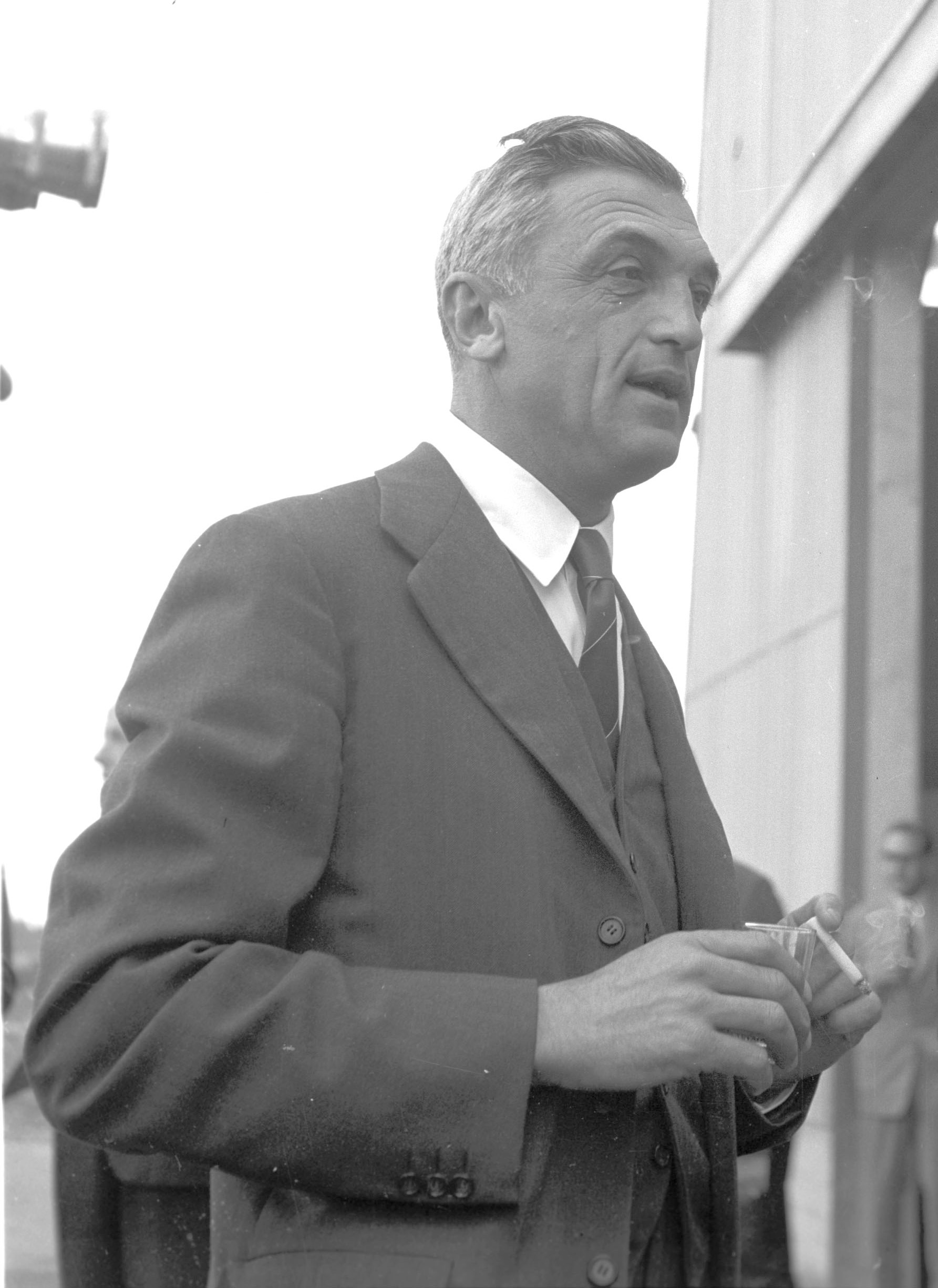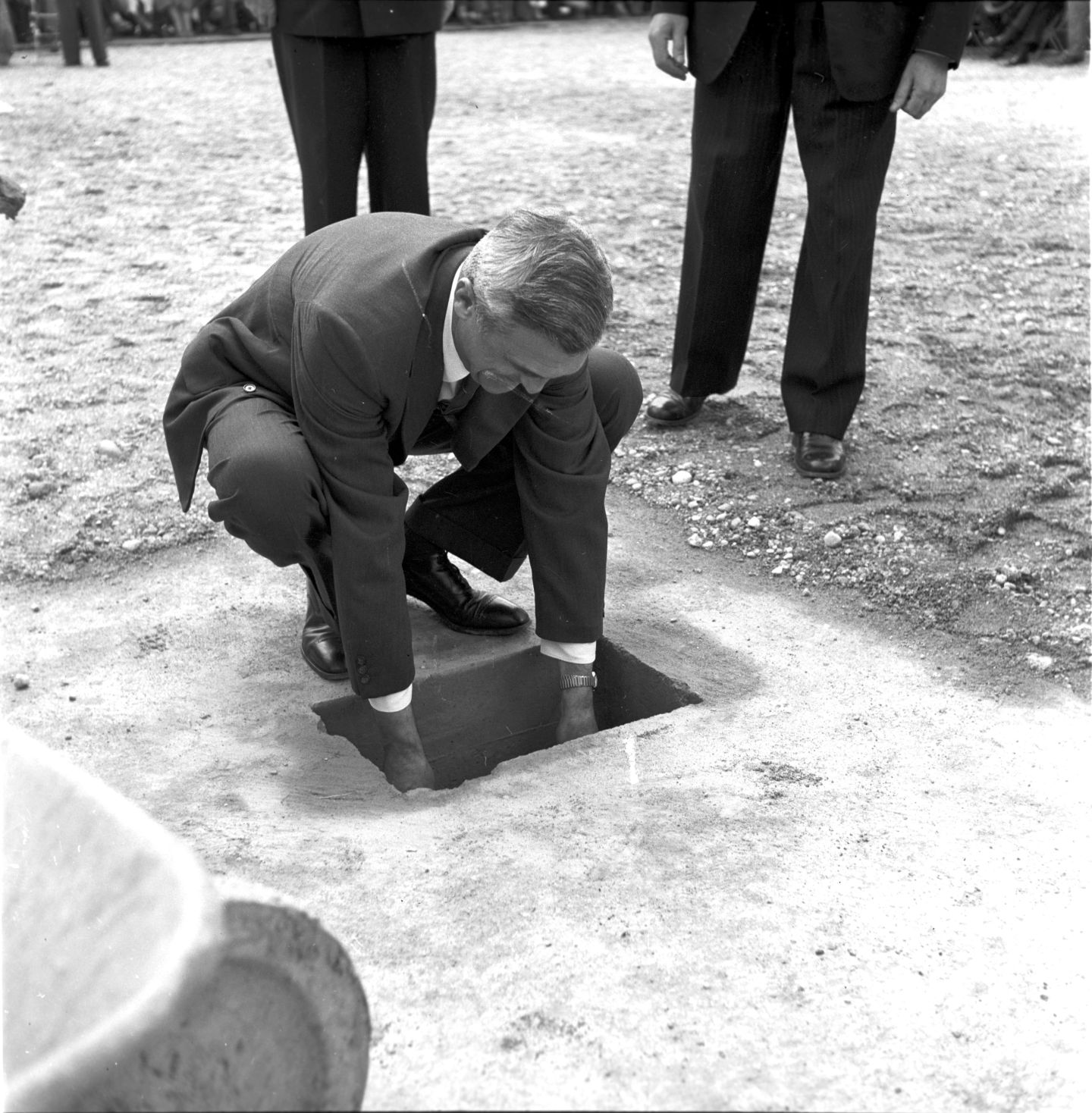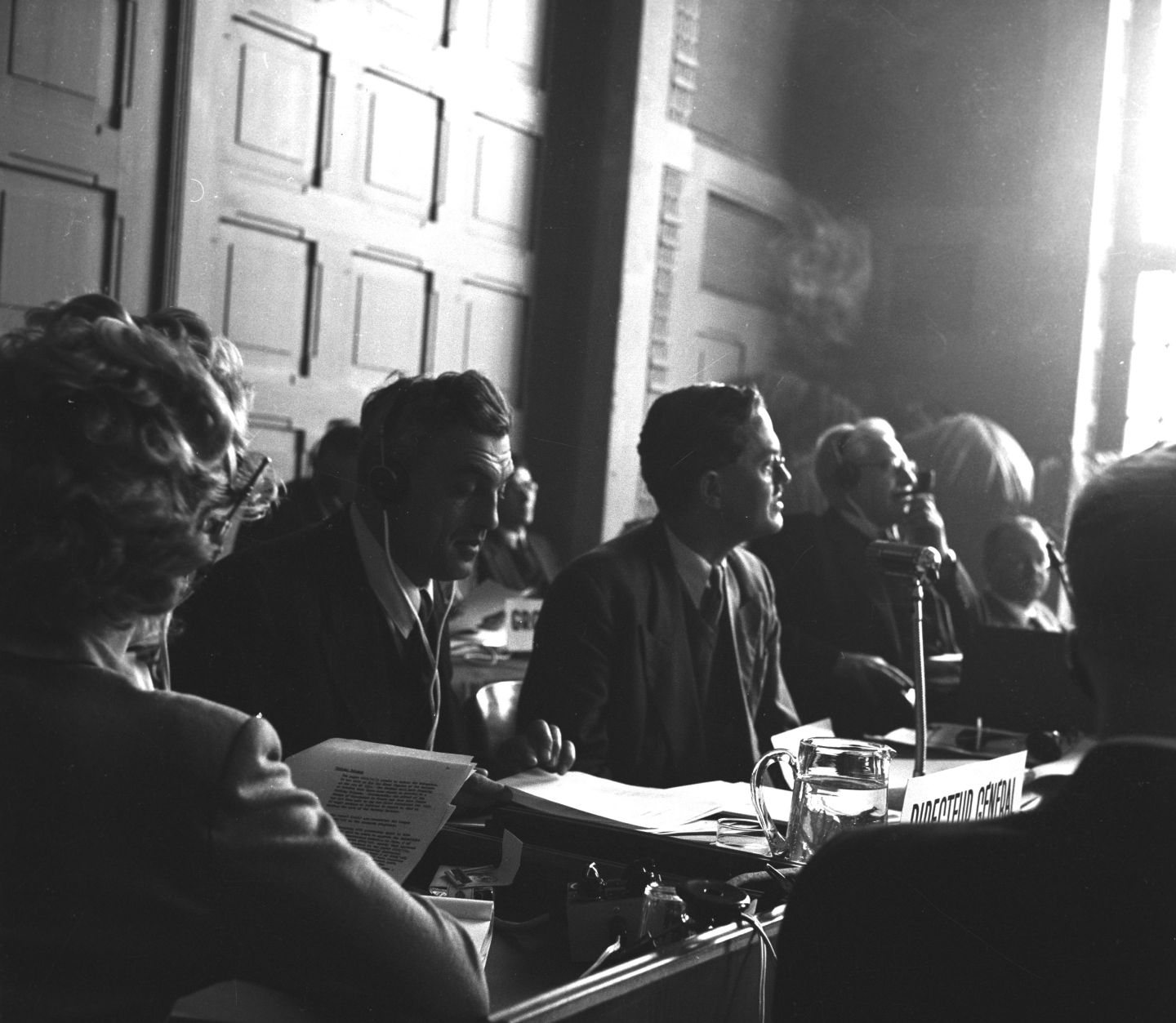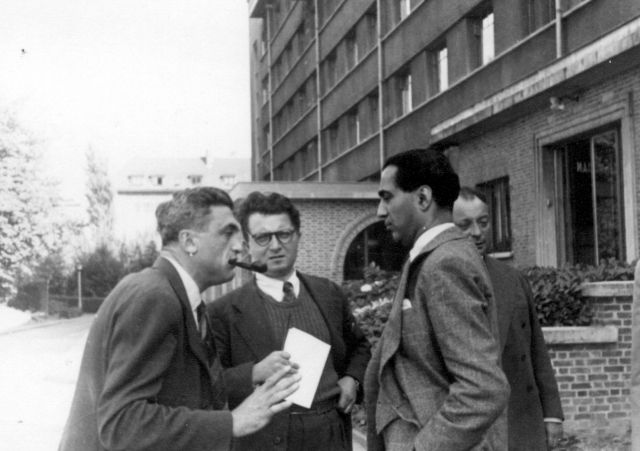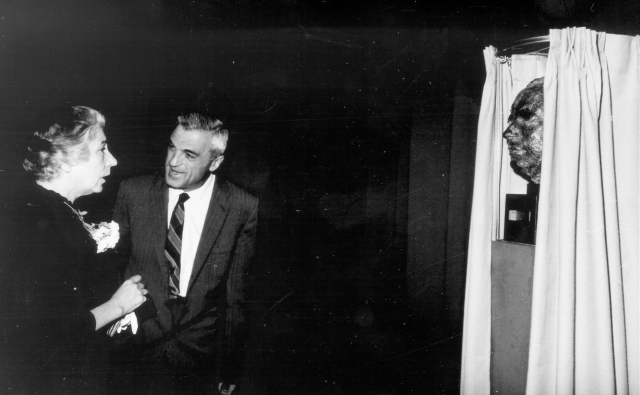Felix Bloch's Nobel Prize exhibited in the CERN Library
Felix Bloch
Introduction
Felix Bloch (1905-1983, Swiss-American), physicist and Nobel laureate, was CERN’s first Director-General, holding the position from 1954 to 1955. He is known for his work on nuclear induction and the “development of new methods for nuclear magnetic precision measurements,” for which he was awarded the Nobel Prize in 1952. This work not only contributed significantly to the field of physics, but also revolutionized diagnostic medicine.
Early life
Bloch was born in 1905 in Zürich, Switzerland. He studied engineering for a year at the Federal Institute of Technology before changing his course of study to physics. In 1928, he earned a Doctorate in Philosophy at the University of Leipzig in Germany, working on the quantum mechanics of electrons in crystals. After completing his PhD, he went to ETH Zürich to work as an assistant to Wolfgang Pauli.
World War II
As a result of Hilter’s rise to power, Bloch left Germany in 1933 ; he emigrated to the United States, accepting a position at Stanford University in California, United States. During this time, he began shifting his research from a theoretical focus to experimental physics. In 1940, he married physicist Lore C. Marsh ; the couple had four children. Bloch later paused his teaching and research duties to work on the Manhattan Project under Robert Oppenheimer. During the summer of 1943, he contributed to the construction of the atomic bomb in Los Alamos, but left a few months later to join Harvard University’s radar project, where he remained until 1945.
Nobel Prize
Following the war, Bloch returned to Stanford University and continued his work on nuclear induction, which earned him and Edward Mills Purcell the Nobel Prize in Physics in 1952. Their discovery led to the invention of a medical diagnostic device that produces images of human tissue. The scanner, safer than CAT scans because they do not involve X-rays, produced more sophisticated images than previously possible.
CERN
A few years after being awarded the Nobel Prize, Bloch became CERN’s first Director-General, a position he held from October 1954 until August 1955. During his year as Director-General, Bloch achieved many milestones, including the creation of a cosmic ray experimental programme.
Bloch laying CERN's first stone, 10 June 1955, CERN Copyright
At the CERN Council’s second session on 24 February 1955, the governing body accepted Bloch’s resignation as Director-General, understanding that he had not anticipated having to sacrifice all of his scientific work for administrative tasks.
CERN’s Second Council Meeting, February 1955, CERN Copyright
CERN Secretary-General Edoardo Amaldi wrote of Bloch : “…apart from his outstanding scientific stature, Bloch’s human qualities made him particularly well suited for the job of Director General of the first multinational European Scientific Organization. Because of his warm personality, great simplicity and very pleasant ways, his relations – both with the staff and the representatives of the governments of the Member States – were easy and most cordial. Despite a short stay, he certainly assured CERN of a harmonious and dignified departure on its great voyage of discovery.”
Later Career
After CERN, Bloch returned once again to Stanford University, where he stayed for the remainder of his career. He died in 1983 in Zürich, Switzerland. Today, CERN has a road named in his honor.
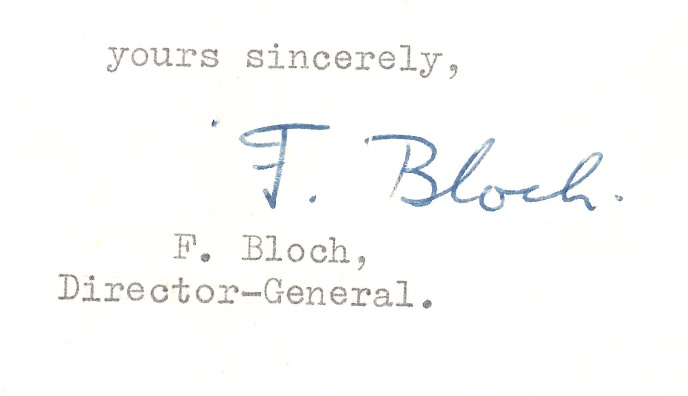
Bloch's signature, 12 November 1954, CERN Archives, CERN Copyright
Bloch & Pauli
It is a natural pairing to have the Nobel Prizes of Wolfgang Pauli and Felix Bloch exhibited here at CERN together.
As a young student, Bloch worked as Pauli’s assistant at ETH Zurich from 1928 to 1929.
Bloch & Pauli at Solvay Congress (right, slightly hidden), 1948, CERN Copyright
Their paths crossed after this, including at the Solvay Congress in 1948 (pictured above). Years later, Bloch attended the inauguration of the Pauli Room at CERN in 1960, where he is pictured below speaking with Pauli’s widow, Franca.
Bloch & Franca Pauli at CERN, April 1960, CERN Copyright
Sources
Abragam, A. "A virtuoso of quantum mechanics," August 1984. https://cds.cern.ch/record/104507/files/Bloch.pdf.
Amaldi, E. "Felix Bloch and CERN," August 1984. https://cds.cern.ch/record/104507/files/Bloch.pdf.
Bene, Enz, and Lenk. "The life and work of Felix Bloch," August 1984. https://cds.cern.ch/record/104507/files/Bloch.pdf.
Felix Bloch (1905-1983). n.d. ETH Zurich. Accessed 3 July 2025. https://library.ethz.ch/en/locations-and-media/platforms/short-portraits/bloch-felix-1905-1983.html.
Felix Bloch - Director-General (October 1954 - August 1955). Accessed 3 July 2025. https://home.cern/about/who-we-are/our-people/biographies/felix-bloch.
Wellisz, Christopher. "Felix Bloch, Nobel Laureate for Pioneer Work in Physics." New York Times, September 12, 1983.

